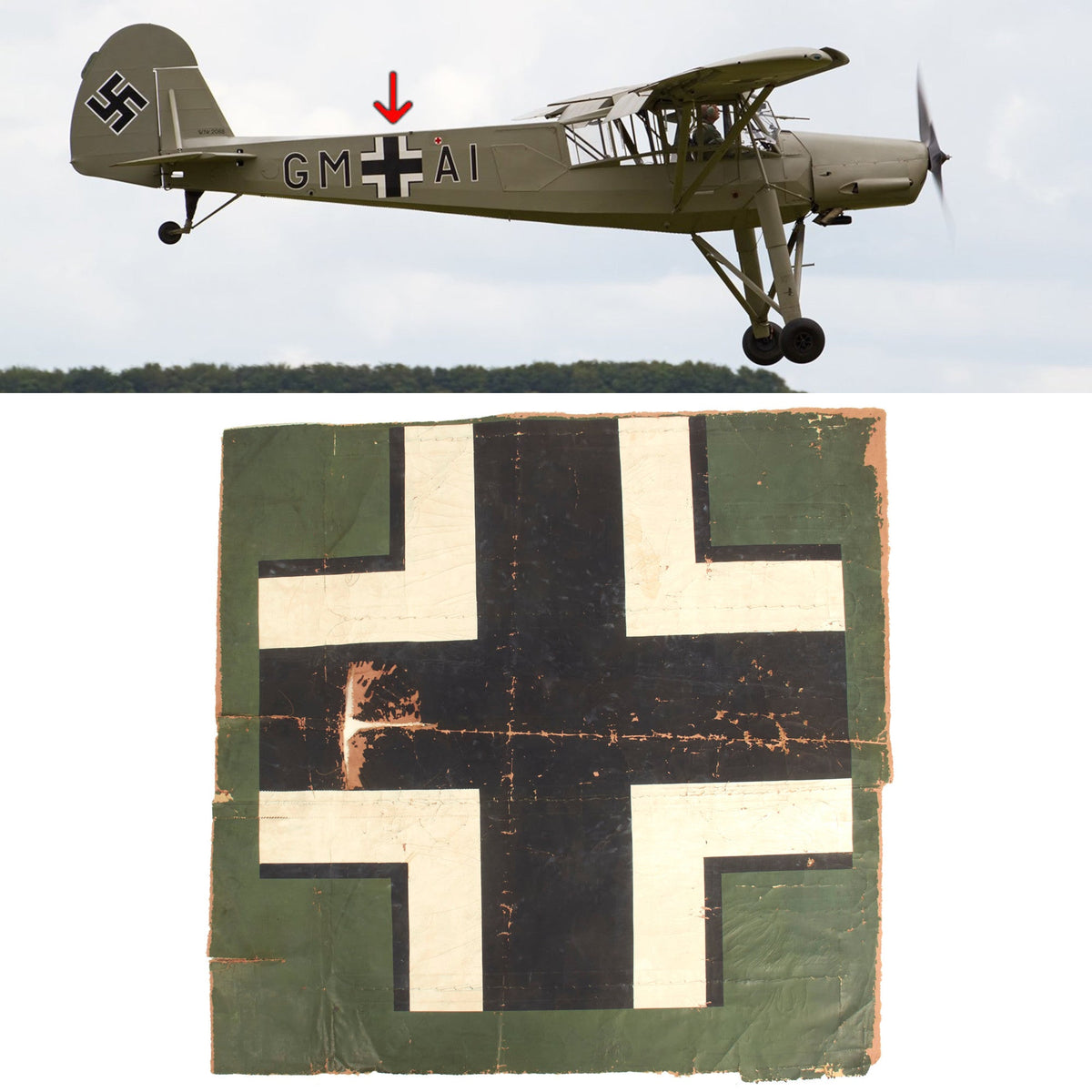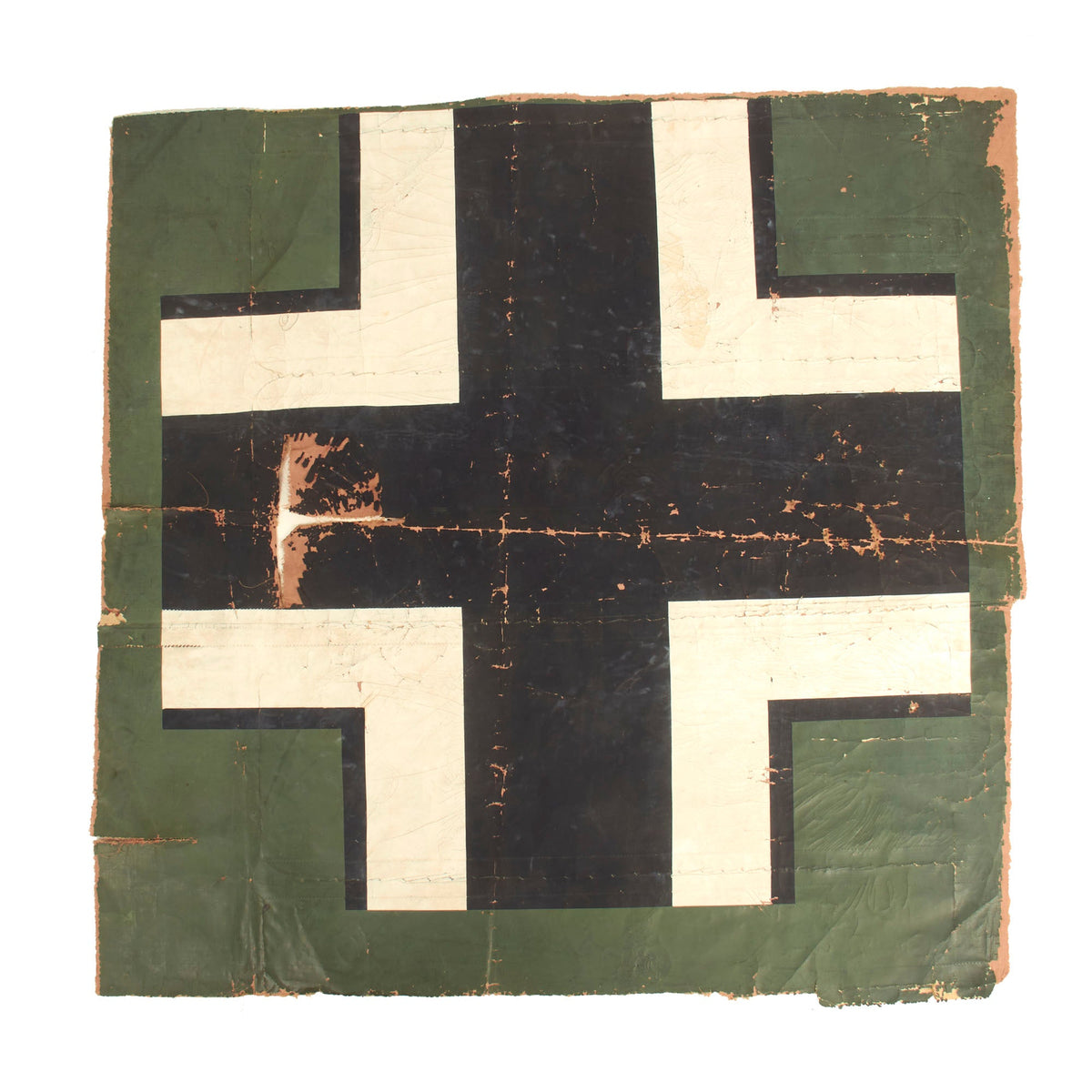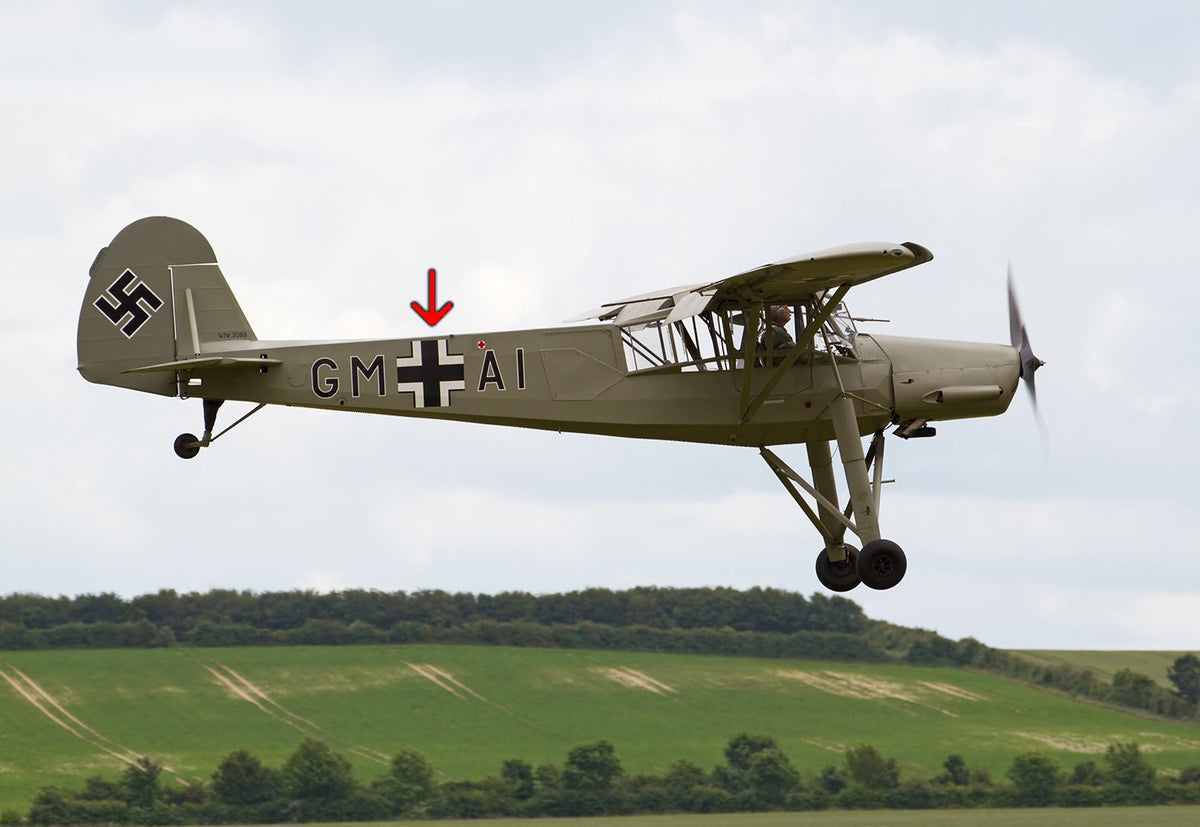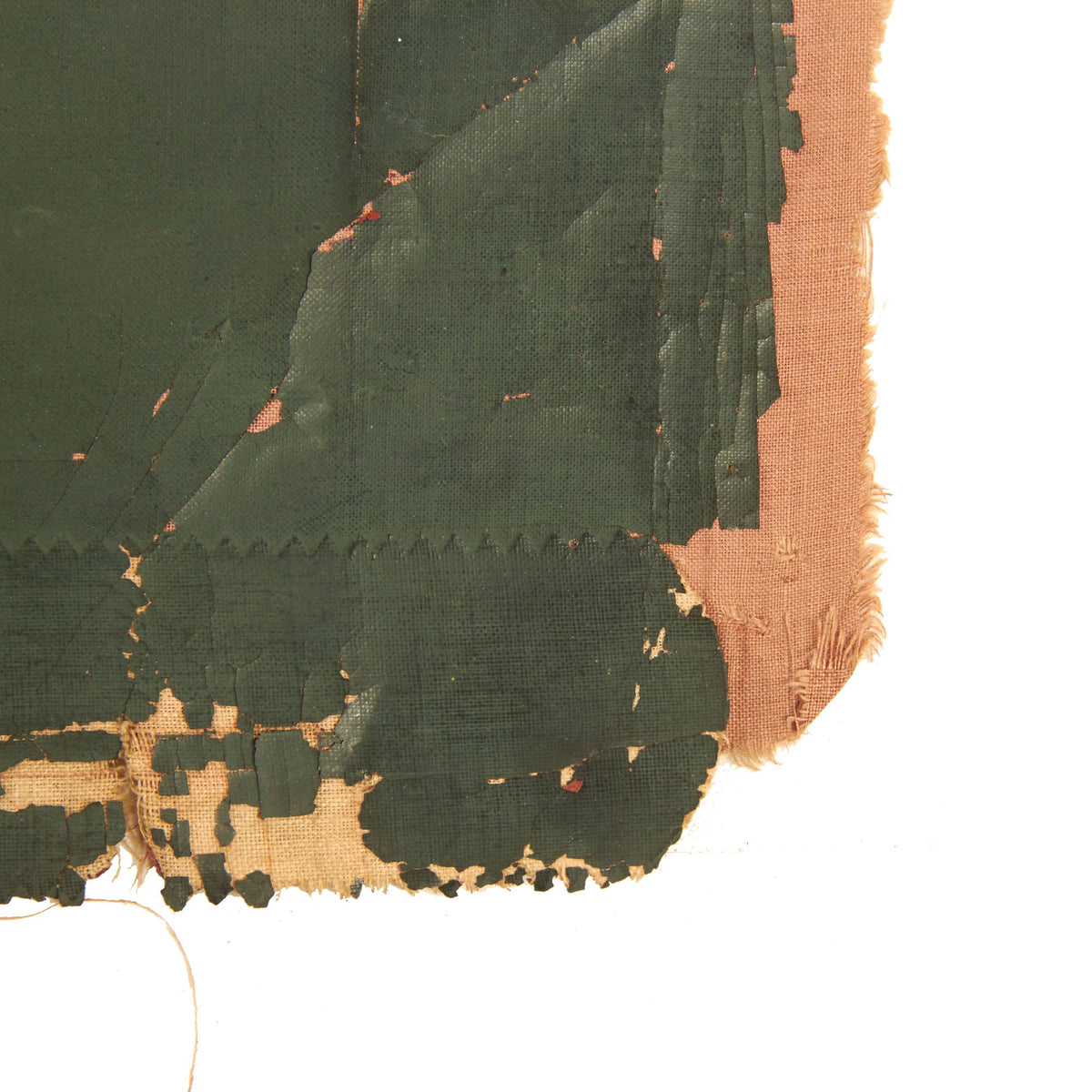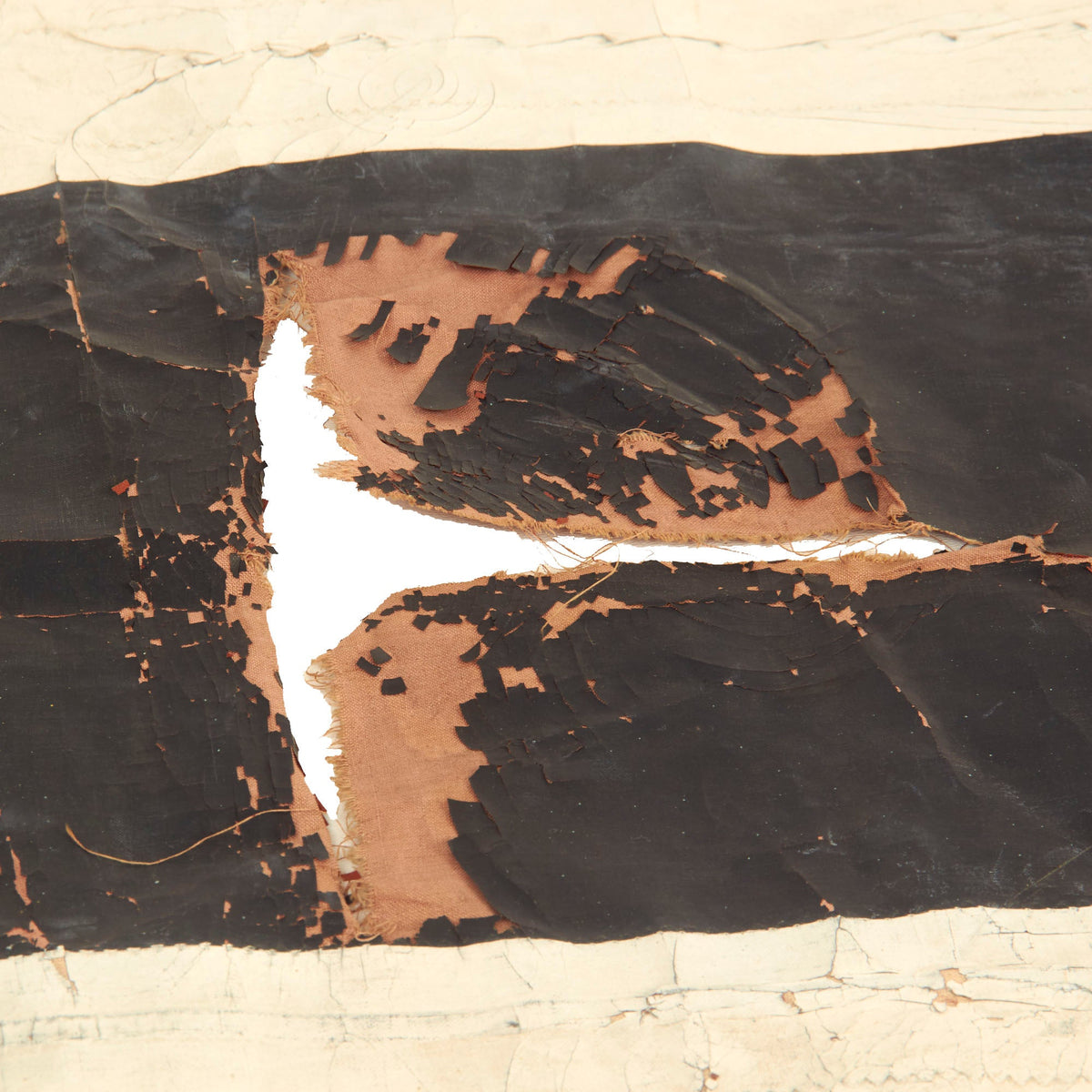Original German WWII Fieseler Fi 156 Storch Aircraft Balkan Cross Painted Cloth Fuselage Section – 44″ x 44″ Original Items
$ 1.995,00 $ 498,75
Original Item: One-of-a-kind. The Fieseler Fi 156 Storch (English: Stork) was a small German liaison aircraft built by Fieseler before and during World War II. It remains famous for its excellent STOL performance and low stall speed of 31 mph (50 kmph).
This is a piece of the canvas painted covering from the Fuselage section of a German WWII Storch aircraft, most likely cut off during the war or just after by a USGI to bring home as a souvenir. It measures approximately 44 inches by 44 inches and shows a Luftwaffe Balkan Cross or Balkenkreuz (Beam Cross) from the side of the aircraft. It shows some paint loss from folding as well as some tearing, but still looks great. This is an exceptionally rare piece as fewer than 3000 Storch aircraft were produced for Germany during WW2 and it will make an excellent display piece.
Please note: The airplane shown in the main picture is not the airplane that the skin section came from, and is shown for illustrative purposes only.
About 2,900 Fi 156s, mostly Cs, were produced from 1937 to 1945 at the Fieseler Factory in Kassel, Germany. In 1942, production started in the Morane-Saulnier factory at Puteaux in France. Due to the demand for Fieseler as a subcontractor for building the Bf 109 and the Fw 190, Storch production was shifted to the Leichtbau Budweis in Budweis in 1943.
During World War Two the Storch was deployed in all European and North African theaters of World War II, but it is probably most famous for its role in Operation Eiche, the 1943 rescue of deposed Italian dictator Benito Mussolini from a boulder-strewn mountain-top near the Gran Sasso. Even though the mountain was surrounded by Italian troops, German commando Otto Skorzeny and 90 paratroopers used gliders to land on the peak and quickly captured it. However, the problem of how to get back off remained. A Focke-Achgelis Fa 223 helicopter was sent, but it broke down en route. Instead, pilot Heinrich Gerlach flew in a Storch. It landed in 30 m (100 ft), and after Mussolini and Skorzeny boarded, it took off in 80 m (250 ft), even though the aircraft was overloaded. The Storch involved in rescuing Mussolini bore the radio code letters, or Stammkennzeichen, of “SJ + LL” in the motion picture coverage of the daring rescue.
On 26 April 1945, a Storch was one of the last aircraft to land on the improvised airstrip in the Tiergarten near the Brandenburg Gate during the Battle of Berlin and the death throes of the Third Reich. It was flown by the test pilot Hanna Reitsch, who flew Generalfeldmarschall Robert Ritter von Greim from Munich to Berlin to answer a summons from AH.
A Storch was the victim of the last dogfight on the Western Front and another was downed by a direct Allied counterpart of the Storch, an L-4 Grasshopper, the military version of the well-known American Piper J-3 Cub civilian training and sport aircraft. The pilot and co-pilot of the L-4, lieutenants Duane Francis and Bill Martin, opened fire on the Storch with their .45 caliber pistols, forcing the German air crew to land and surrender.
Field Marshal Rommel used Storch aircraft for transport and battlefield surveillance during the North African desert campaign of World War II.
During the war a number of Störche were captured by the Allies. One became the personal aircraft of Field Marshal Montgomery. Others were used as the personal aircraft of Air Vice Marshal Arthur Coningham and Air Vice Marshal Harry Broadhurst, who acquired his Storch in North Africa, and flew it subsequently in Italy and North-West Europe.
The British captured 145, of which 64 were given to the French as war compensation from Germany.
Fast Shipping with Professional Packaging
Thanks to our longstanding association with UPS FedEx DHL, and other major international carriers, we are able to provide a range of shipping options. Our warehouse staff is expertly trained and will wrap your products according to our exact and precise specifications. Prior to shipping, your goods will be thoroughly examined and securely secured. We ship to thousands clients each day across multiple countries. This shows how we're dedicated to be the largest retailer on the internet. Warehouses and distribution centres can be located throughout Europe as well as the USA.
Note: Orders with more than one item will be assigned a processing date depending on the item.
Before shipping before shipping, we'll conduct a thorough inspection of the items you have ordered. Today, the majority of orders will be delivered within 48 hours. The delivery time will be between 3-7 days.
Returns
The stock is dynamic and we cannot completely manage it because multiple stakeholders are involved, including our factory and warehouse. So the actual stock may alter at any time. It's possible that you may not receive your order once the order has been made.
Our policy is valid for a period of 30 days. If you don't receive the product within 30 days, we are not able to issue a refund or an exchange.
You can only return an item if it is unused and in the same state as the day you received it. You must have the item in its original packaging.
Related products
Uncategorized
Uncategorized
Uncategorized
Band of Brothers ORIGINAL GERMAN WWII Le. F.H. 18 10.5cm ARTILLERY PIECE Original Items
Uncategorized
Angolan Rebel 1970s era 60mm Inert Display Mortar from Angolan Civil War Original Items
Uncategorized
Australian WWII Owen MK1 Machine Carbine SMG Custom Fabricated Replica with Sling Original Items
Uncategorized
Uncategorized
Uncategorized
Uncategorized
Uncategorized
Uncategorized
Uncategorized
Uncategorized
Uncategorized
Uncategorized
Uncategorized
Uncategorized
Uncategorized
